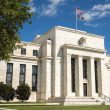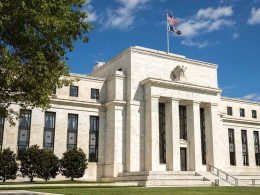by BeiChen Lin, Russell Investments
Executive summary:
- The U.S. core consumer price index rose by more than expected in January
- We believe the Fed could still deliver a rate cut in May
- With two quarters of negative GDP growth, the UK has entered a technical recession
On the latest edition of Market Week in Review, Investment Strategy Analyst BeiChen Lin and Product Operations Analyst McKenna Painter discussed the January U.S. inflation report and how it may impact the timing of potential U.S. Federal Reserve (Fed) rate cuts. They also reviewed the latest economic data from the UK and discussed when the Bank of England (BoE) could begin lowering borrowing costs.
Hot U.S. inflation report jolts markets
Painter and Lin started their conversation by digging into January’s U.S. consumer price index (CPI) report, which showed that core inflation in the U.S. held steady at a year-over-year rate of 3.9%. This reading was a touch hotter than expected, triggering a sharp decline in markets on Feb. 13, Lin said.
“It’s important to understand that the path toward bringing inflation back down to its 2% target isn’t necessarily going to be linear or consistent. Instead, it’s going to be a path with some twists and turns involved, and that’s what happened with January’s core CPI report,” he stated.
Lin said that airfare and transportation costs were one key reason the report came in stronger than anticipated. In his opinion, these prices tend to be a little more volatile and don’t typically provide as much information about the path forward for future inflation rates. Additionally, inflation was a little bit on the sticky side in owners’ equivalent rent in January, Lin said.
“There is a well-documented lag between falling market rent prices and when this decline shows up in the rent component of the CPI. With this in mind, I would expect that over time, U.S. rent costs will continue to moderate—and core inflation rates will ease as well,” he remarked.
Lin noted that markets have since recovered a bit from the selloff brought on by January’s inflation numbers, but that the volatility in the immediate aftermath of the report could be partly related to the Fed’s data-driven approach. “When you have a central bank like the Fed that is very reliant on data to help inform its decisions on monetary policy, each new round of economic data can sometimes cause a little more volatility in markets than normal,” he explained.
So, how might the January inflation numbers impact when the Fed delivers its first rate cut? Lin said he doesn’t think a May rate cut—which markets had been pricing in prior to the January report—can be ruled out just yet. “Remember, in taming inflation, the Fed cares more about the overall downward trend than one particular reading. Because of this, I think a single hot CPI report doesn’t necessarily change the Fed’s plans—and that a May rate cut is still possible,” Lin said, stressing that the Fed’s decision will ultimately rely on a broad swath of data.
He emphasized that the U.S. economy has many different indicators, and that not all are sending the same message. Case-in-point: January retail sales, Lin said, noting that they widely missed analyst expectations, falling by 0.8%. “The retail sales report paints a bit of an opposite message from January’s CPI reading and hot jobs report, in that perhaps the U.S. economy isn’t as resilient as thought,” he stated.
Ultimately, there’s a high level of macroeconomic uncertainty right now, Lin said. “At Russell Investments, we’ve lowered our U.S. recession risk for the next 12 to 18 months to around 40%—but 40% is still elevated compared to normal. We think there are still risks remaining, and it could be the case that some of the strong data points right now—like the jobs report—moderate throughout the course of the year,” he remarked.
GDP contracts again as UK enters technical recession
Pivoting to the UK, Painter asked Lin for an update on how the Bank of England (BoE)’s campaign to curb inflation is progressing. Lin responded by noting that while core inflation moderated during January, it still remains much higher than normal, at a rate of 5.1%. “The BoE’s target range for inflation is 2%, so there’s still plenty of work to be done,” he observed.
Lin said that the other challenge facing the UK pertains to growth, noting that the country’s GDP (gross domestic product) contracted by 0.3% during the fourth quarter of last year. Because GDP also contracted during the third quarter of 2023, the UK is now technically in a recession, he noted—even though both contractions were very minor.
The BoE is still very much committed to bringing inflation down to target, and central bank officials recognize that doing so might cause some pain for the economy, Lin said. However, the soft economic data readings, when combined with the moderation in inflation, suggest that interest rates in the UK have likely peaked, he said. “I expect that the BoE will likely cut rates later this year—but just like with the Fed, the timing will be dependent on how the data unfolds,” Lin concluded.
Copyright © Russell Investments















